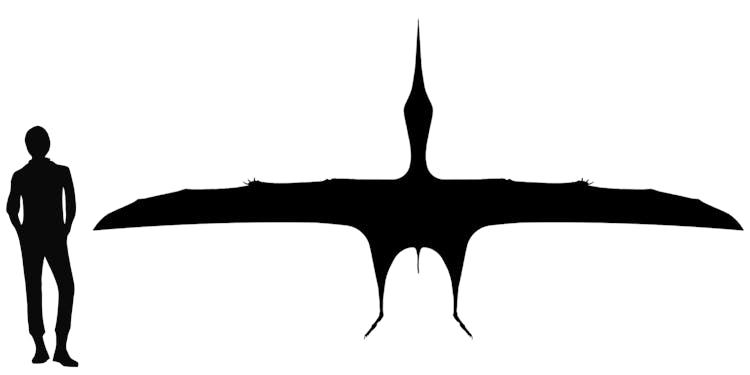


This pterosaur, a large tapejarid from Brazil’s Crato Formation of 112 million years ago, got a small cameo role in the critically acclaimed 1999 BBC miniseries Walking with Dinosaurs but under a different name. At the time, a member of its species, named Tupandactylus navigans, was described as a species of Tapejara.
So was the other known Tupandactylus species, T. imperator. The species T. navigans was not even described until 2003, thereby adding to the slight confusion that ensued.
On the show the genus is clearly shown with a tall keratinous crest, a feature which is correct enough.
The type species T. imperator was named by Campos and Kellner in 1997 as a species of Tapejara, on the basis of a holotype skull and partial lower jaw. Tapejara navigans on the other hand was renamed in 2007 by David Unwin and colleagues.
They called it Ingridia, but the name did not work since they called the animal Ingridia imperator rather than Ingridia navigans and there were further complications down the road for the publishers. It was only four years later that it was reclassified as a member of the genus Tupandactylus.
We know that Tupandactylus had a keratinous crest thanks to the bony extensions at the back of the skull. Also, a small beak of keratin occurred at the front of the jaws while pycnofibers covered the rest of the face and body.
As for its habits, it lived alongside other pterosaurs like Arthurdactylus and Brasileodactylus in the lagoon environment of the Crato Formation.
It could have been a fruit-eater, using its short, deep jaws to pluck and crush the fruits of plants such as cycads (which are toxic, but we haven’t a clue of the animals’ resistance so this is speculation) and perhaps flowering plants.
On the other hand, it might have had a generalized diet, adding small animals to supplement its diet. They may have used their crest as identifying markers within the species and also between other kinds of pterosaur. A big Tupandactylus would have had a wingspan up to 5 meters across.
